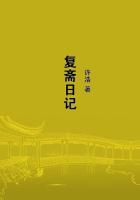Meteors revolve around the sun in a vast swarm, every individual member of which pursues an orbit in accordance with the well-known laws of Kepler. In order to understand the movements of these objects, to account satisfactorily for their periodic recurrence, and to predict the times of their appearance, it became necessary to learn the size and the shape of the track which the swarm followed, as well as the position which it occupied. Certain features of the track could no doubt be readily assigned. The fact that the shower recurs on one particular day of the year, viz., November 13th, defines one point through which the orbit must pass. The position on the heavens of the radiant point from which the meteors appear to diverge, gives another element in the track. The sun must of course be situated at the focus, so that only one further piece of information, namely, the periodic time, will be necessary to complete our knowledge of the movements of the system. Professor H. Newton, of Yale, had shown that the choice of possible orbits for the meteoric swarm is limited to five. There is, first, the great ellipse in which we now know the meteors revolve once every thirty three and one quarter years. There is next an orbit of a nearly circular kind in which the periodic time would be a little more than a year. There is a similar track in which the periodic time would be a few days short of a year, while two other smaller orbits would also be conceivable. Professor Newton had pointed out a test by which it would be possible to select the true orbit, which we know must be one or other of these five. The mathematical difficulties which attended the application of this test were no doubt great, but they did not baffle Professor Adams.
There is a continuous advance in the date of this meteoric shower.
The meteors now cross our track at the point occupied by the earth on November 13th, but this point is gradually altering. The only influence known to us which could account for the continuous change in the plane of the meteor's orbit arises from the attraction of the various planets. The problem to be solved may therefore be attacked in this manner. A specified amount of change in the plane of the orbit of the meteors is known to arise, and the changes which ought to result from the attraction of the planets can be computed for each of the five possible orbits, in one of which it is certain that the meteors must revolve. Professor Adams undertook the work. Its difficulty principally arises from the high eccentricity of the largest of the orbits, which renders the more ordinary methods of calculation inapplicable. After some months of arduous labour the work was completed, and in April, 1867, Adams announced his solution of the problem. He showed that if the meteors revolved in the largest of the five orbits, with the periodic time of thirty three and one quarter years, the perturbations of Jupiter would account for a change to the extent of twenty minutes of arc in the point in which the orbit crosses the earth's track. The attraction of Saturn would augment this by seven minutes, and Uranus would add one minute more, while the influence of the Earth and of the other planets would be inappreciable. The accumulated effect is thus twenty-eight minutes, which is practically coincident with the observed value as determined by Professor Newton from an examination of all the showers of which there is any historical record. Having thus showed that the great orbit was a possible path for the meteors, Adams next proved that no one of the other four orbits would be disturbed in the same manner.
Indeed, it appeared that not half the observed amount of change could arise in any orbit except in that one with the long period. Thus was brought to completion the interesting research which demonstrated the true relation of the meteor swarm to the solar system.
Besides those memorable scientific labours with which his attention was so largely engaged, Professor Adams found time for much other study. He occasionally allowed himself to undertake as a relaxation some pieces of numerical calculation, so tremendously long that we can only look on them with astonishment. He has calculated certain important mathematical constants accurately to more than two hundred places of decimals. He was a diligent reader of works on history, geology, and botany, and his arduous labours were often beguiled by novels, of which, like many other great men, he was very fond. He had also the taste of a collector, and he brought together about eight hundred volumes of early printed works, many of considerable rarity and value. As to his personal character, I may quote the words of Dr. Glaisher when he says, "Strangers who first met him were invariably struck by his ****** and unaffected manner. He was a delightful companion, always cheerful and genial, showing in society but few traces of his really shy and retiring disposition. His nature was sympathetic and generous, and in few men have the moral and intellectual qualities been more perfectly balanced."In 1863 he married the daughter of Haliday Bruce, Esq., of Dublin and up to the close of his life he lived at the Cambridge Observatory, pursuing his mathematical work and enjoying the society of his friends.
He died, after a long illness, on 21st January, 1892, and was interred in St. Giles's Cemetery, on the Huntingdon Road, Cambridge.
End















